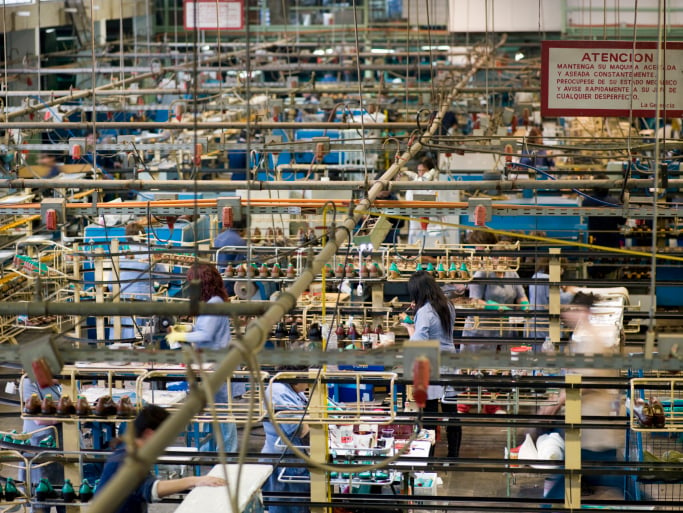
Source: Thinkstock
The data comes from a new study by the Boston Consulting Group (BCG) and includes such tidbits as the U.K. is now the lowest-cost manufacturer in Western Europe, and it is less expensive to manufacture in Mexico than in China. BCG has tracked changes in production costs over the past decade in the world’s largest 25 goods-exporting nations. These countries account for nearly 90% of all global exports of manufactured goods.
Five countries usually regarded as low-cost manufacturing sites have experienced serious erosion in their cost advantages in the past decade. China, Brazil, the Czech Republic, Poland and Russia have all seen sharp wage increases, slowing productivity growth, unfavorable currency rates and much higher energy costs. BCG notes that China’s competitive advantage over the U.S. has narrowed to less than 5%.
Western European nations like Belgium, Sweden, France, Switzerland and Italy continue to fall further behind the U.S. as their energy costs rise and productivity growth slows or even declines. These countries were behind the U.S. 10 years ago, and their competitive situation has gotten worse.
Falling currencies have kept countries like India and Indonesia competitive, while Britain and the Netherlands have improved their productivity. The two Asian nations have been able to improve their cost structures relative to their peers, and the two European countries have become more cost competitive.
The “rising stars” in global manufacturing are Mexico and the U.S. Both have improved relative compared with virtually all 25 major exporting nations. Stable wage growth, sustained productivity gains, steady exchange rates and a big advantage in energy costs are the reasons for the two countries’ improving fortunes. In fact, according to BCG:
Mexico now has lower average manufacturing costs than China. Overall costs in the U.S., meanwhile, are 10 to 25 percent lower than those of the world’s ten leading goods-exporting nations other than China.
BCG did a similar study in 2012 in which the firm said that low energy costs and low labor costs could add as many as 5 million new jobs in the U.S. manufacturing sector and related service sectors by 2020. There were 11.94 million manufacturing jobs in the U.S. in September of 2012 when the study was released. Last month, there were 12.08 million U.S. manufacturing jobs according to the Bureau of Labor Statistics’ preliminary survey. Job growth had better pick up steam if the BCG prediction is going to come true.
READ MORE: Montana, Alaska Lead List of Top Places to Live
Take This Retirement Quiz To Get Matched With An Advisor Now (Sponsored)
Are you ready for retirement? Planning for retirement can be overwhelming, that’s why it could be a good idea to speak to a fiduciary financial advisor about your goals today.
Start by taking this retirement quiz right here from SmartAsset that will match you with up to 3 financial advisors that serve your area and beyond in 5 minutes. Smart Asset is now matching over 50,000 people a month.
Click here now to get started.
Thank you for reading! Have some feedback for us?
Contact the 24/7 Wall St. editorial team.



